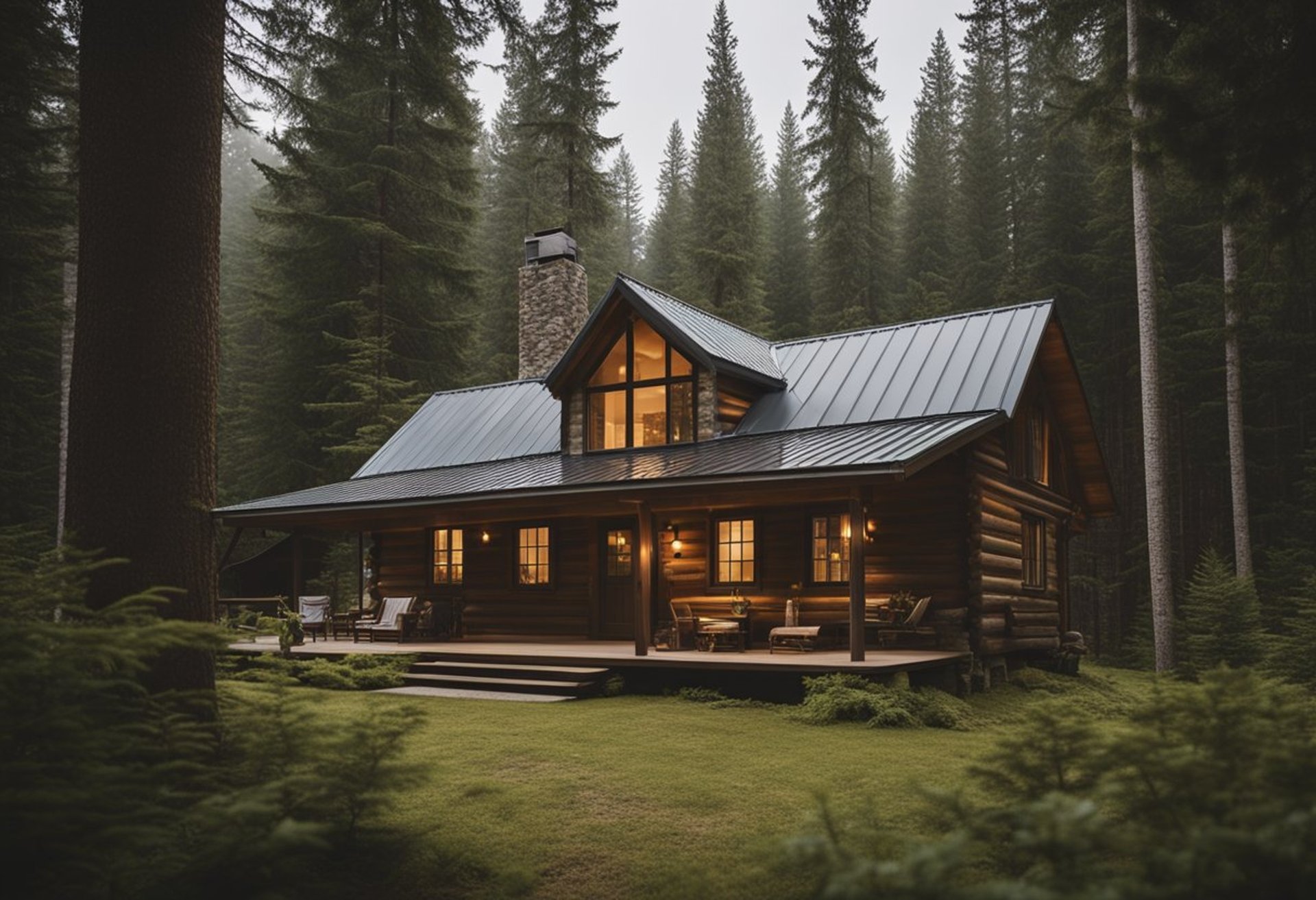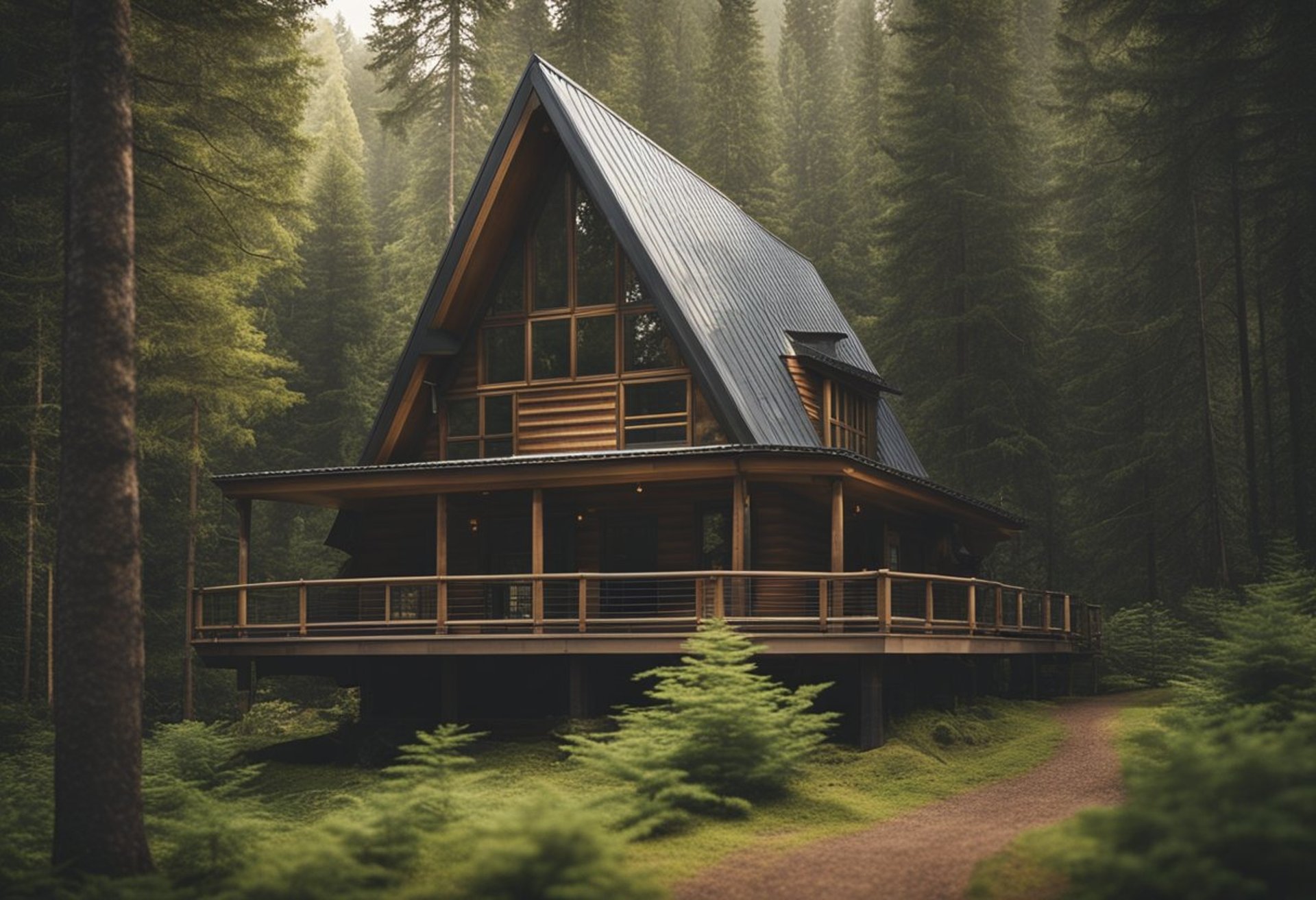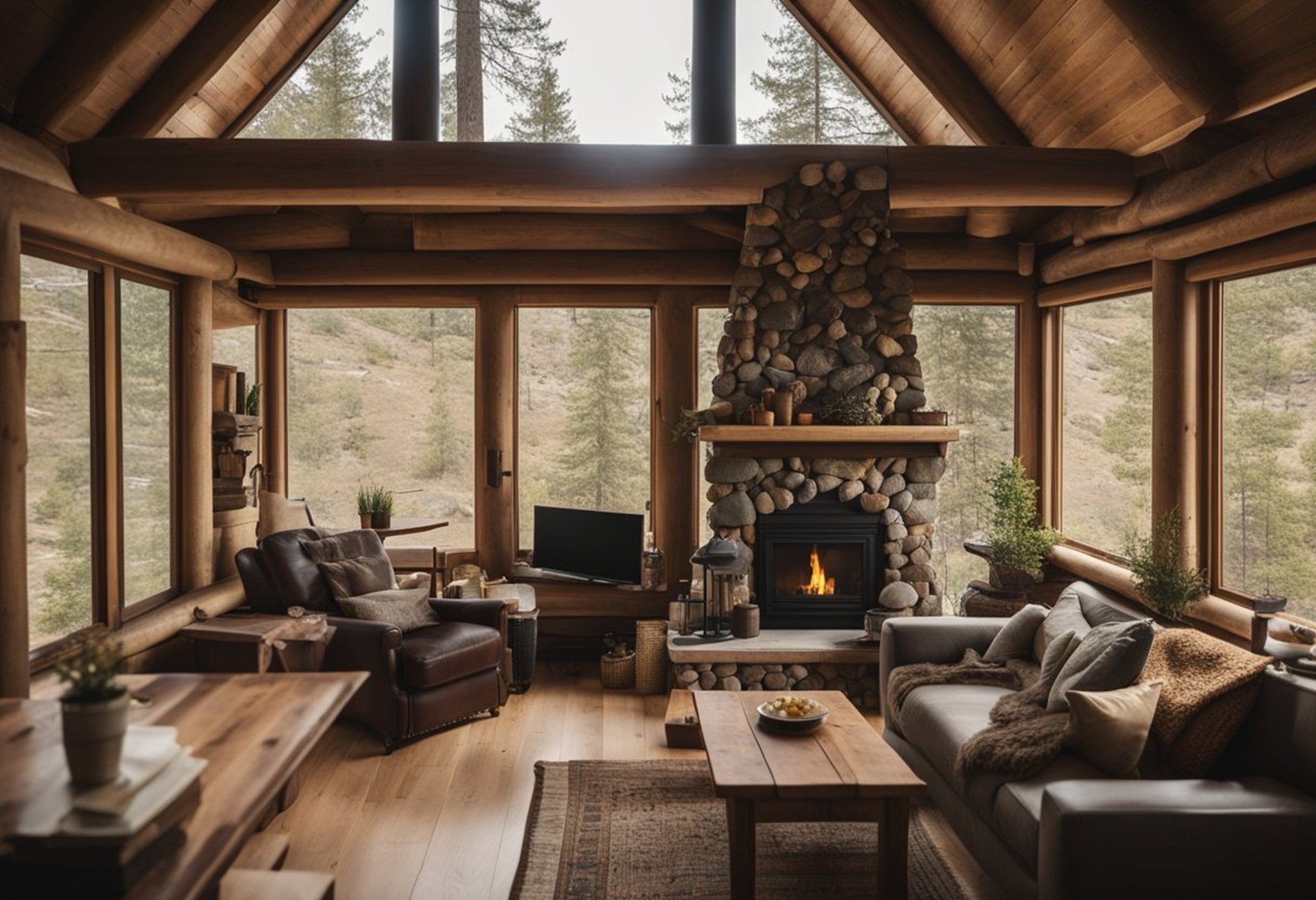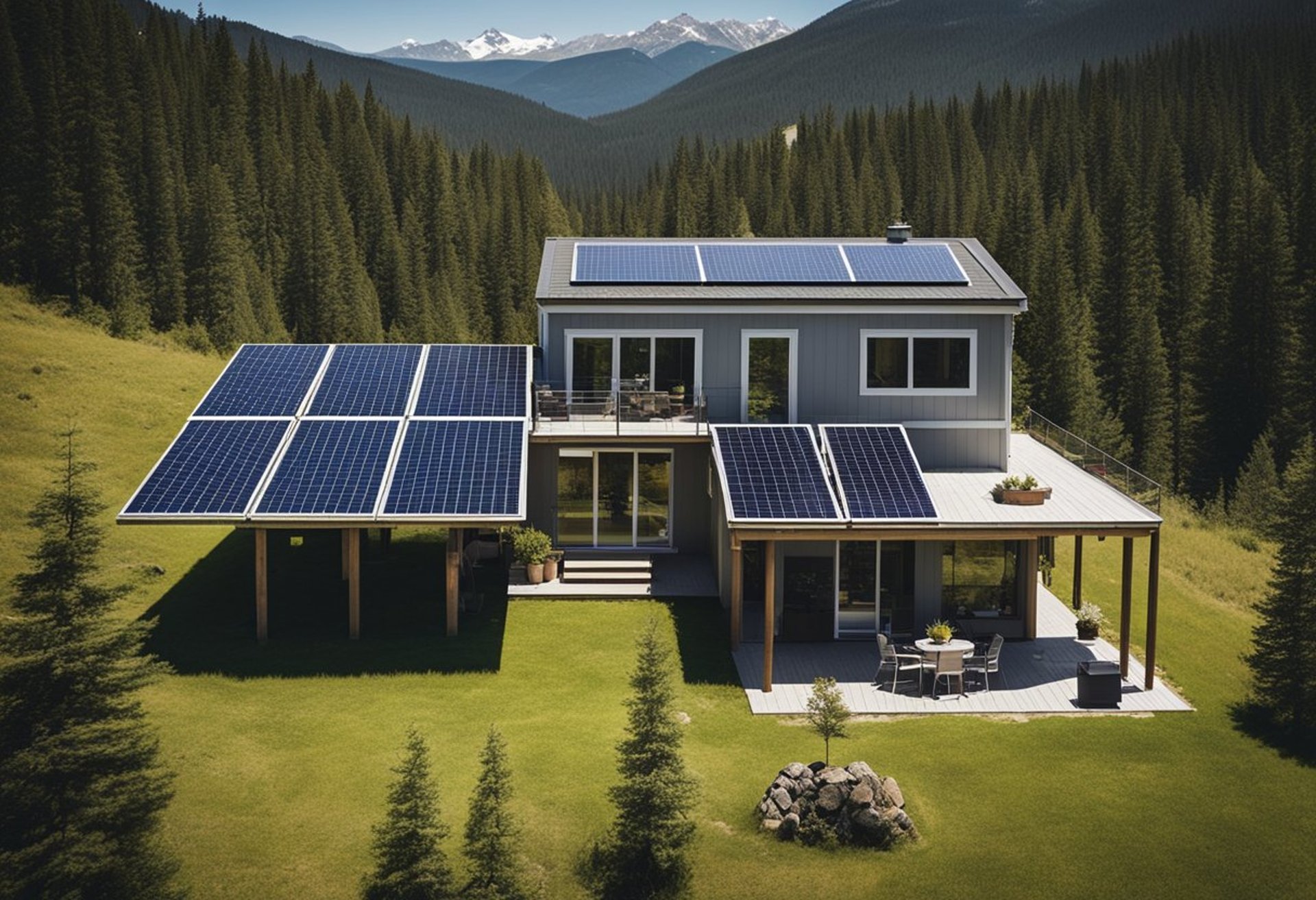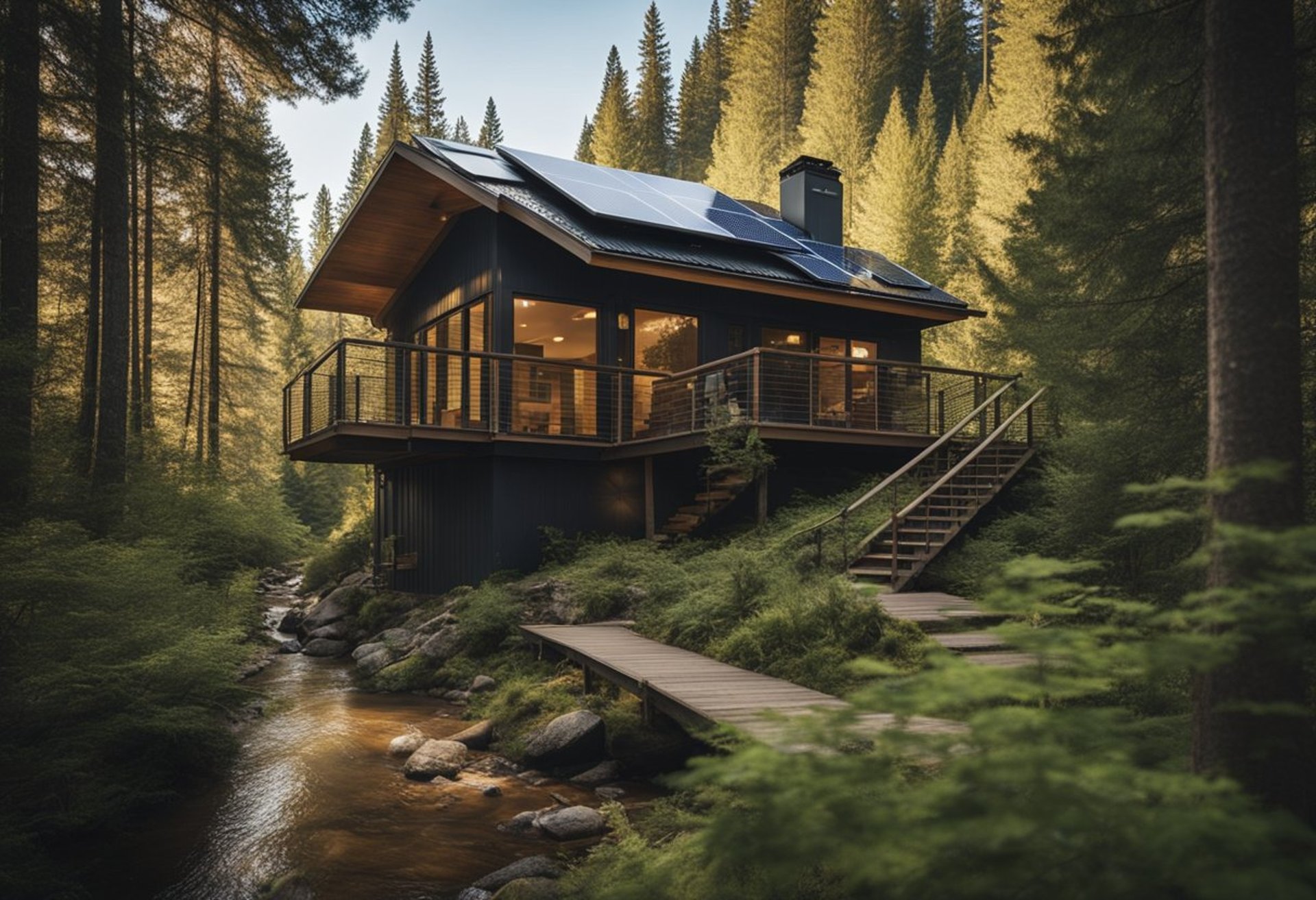2 Story Off Grid Cabin: Designing Your Sustainable Retreat
Imagine stepping into a tranquil escape, surrounded by nature, where every detail of the structure echoes sustainability. A two-story off-grid cabin not only offers an intimate connection with the environment but also provides functional living space designed for self-sufficiency. The allure of building such a retreat draws many, promising freedom from conventional utility systems and a chance to create a personalized living experience.
2 Story Off Grid Cabin: Designing Your Sustainable Retreat
Imagine stepping into a tranquil escape, surrounded by nature, where every detail of the structure echoes sustainability. A two-story off-grid cabin not only offers an intimate connection with the environment but also provides functional living space designed for self-sufficiency. The allure of building such a retreat draws many, promising freedom from conventional utility systems and a chance to create a personalized living experience.
Designing this type of cabin involves clever planning and innovative solutions to ensure comfort while remaining environmentally friendly. From choosing the right materials to implementing effective utility systems, every aspect contributes to making off-grid living both practical and enjoyable. Those intrigued by the idea of crafting their own off-grid oasis can find inspiration and guidance in this exploration of cabin design and installation.
Key Takeaways
A two-story off-grid cabin enhances both space and sustainability.
Thoughtful design and utility systems are essential for self-sufficient living.
Building this cabin entails careful planning and adherence to legal requirements.
Conceptualizing Your Off-Grid Cabin
When imagining an off-grid cabin, several core factors come into play. Understanding the lifestyle implications, selecting an appropriate site, and adhering to sound design principles are essential for success.
Understanding Off-Grid Living
Off-grid living requires an adjustment in mindset and lifestyle. It emphasizes self-sufficiency and resource management. Individuals may rely on solar panels, wind turbines, or alternative energy sources to meet their needs.
Water collection systems, like rainwater harvesting, and waste management solutions, such as composting toilets, also play crucial roles.
Considerations include food production, typically through gardening or raising livestock. Each decision contributes to the goal of minimizing dependency on external resources.
Site Selection and Environment
Choosing the right site is critical for an off-grid cabin. Factors such as accessibility, climate, and natural resources significantly influence this decision.
Ideal locations often include areas with abundant sunlight for solar energy and fresh water sources.
Proximity to natural resources like wood for heating and construction is also beneficial.
It's essential to analyze local zoning laws and land regulations before purchasing property. A thorough understanding of the terrain and flora can impact sustainability efforts maximally.
Cabin Design Principles
Designing a modern off-grid cabin includes considerations for both functionality and comfort. Prioritizing energy efficiency is vital; well-insulated walls and strategic window placement enhance natural light and heat retention.
Open floor plans can create a sense of spaciousness and flow, important in smaller structures.
Incorporating sustainable materials, such as reclaimed wood or straw bales, not only benefits the environment but also enhances aesthetic appeal.
Additional features like a green roof can promote biodiversity and improve insulation, making the cabin blend harmoniously with its surroundings.
Thoughtful design choices ensure the cabin meets practical needs while maintaining a low environmental impact.
Designing the Cabin
Designing a two-story off-grid cabin requires careful planning of structural elements, space utilization, and material choices. Effective design not only maximizes functionality but also embraces sustainability in remote settings.
Structural Considerations
The structural integrity of a two-story cabin is paramount, especially in off-grid locations. Using locally sourced timber can enhance durability and reduce transportation costs. A solid foundation, such as a concrete slab or post-and-beam structure, is essential for stability.
Consider factors like snow load and wind resistance when determining roof angles and wall heights. Roof design should include overhangs to protect from rain and sun while allowing for natural light. Utilizing large windows can improve ventilation and create a connection to the surrounding landscape.
Maximizing Space Efficiency
Maximizing space in a two-story cabin often involves innovative design solutions. Open floor plans can enhance the sense of space, while multi-functional furniture keeps the area uncluttered. Built-in storage options under stairs or in walls are effective for keeping living areas tidy.
Using vertical space is crucial. High ceilings can allow for lofted sleeping areas, freeing up ground space for communal activities. Additionally, consider incorporating outdoor spaces like balconies or terraces to expand the living area without increasing the cabin's footprint.
Incorporating Sustainable Materials
Choosing sustainable materials plays a vital role in off-grid cabin design. Reclaimed wood not only adds character but also reduces environmental impact. For insulation, materials like sheep’s wool or recycled denim can improve energy efficiency.
Solar panels should be integrated into the cabin design to harness renewable energy. A rainwater harvesting system can provide a sustainable water source, while composting toilets contribute to a reduced ecological footprint. Prioritizing sustainability ensures the cabin is truly off-grid and environmentally friendly.
Utility Systems for Off-Grid Living
Off-grid living requires specific utility systems to ensure self-sufficiency. These systems address essential needs such as water, waste management, and climate control, which are crucial for comfortable and sustainable living.
Water Collection and Purification
Water collection and purification are vital for off-grid cabins. Rainwater harvesting systems are common, utilizing gutters and barrels to capture precipitation. A typical setup may include large storage tanks with a capacity of 1,000 to 5,000 gallons.
For purification, a combination of filtration systems can be employed. Options include:
UV purifiers: Effective at killing bacteria and viruses.
Carbon filters: Removing contaminants and improving taste.
Reverse osmosis systems: Ideal for filtering water with high mineral content.
Regular maintenance of these systems ensures a safe and continuous water supply.
Waste Management Solutions
Managing waste is critical in an off-grid environment. Composting toilets offer an eco-friendly way to handle human waste, using aerobic decomposition to minimize odor and reduce environmental impact.
In addition, greywater systems can recycle water from sinks and showers. Key components include:
Filtration systems: To clean greywater before reuse.
Drain fields: For dispersing treated water into the soil.
Both systems promote sustainability by returning nutrients to the earth while protecting local water supplies.
Heating and Cooling Strategies
Proper heating and cooling are necessary for year-round comfort in an off-grid cabin. A mix of passive and active systems can create an effective climate control strategy.
For heating:
Wood stoves: Commonly used for solid fuel heating.
Solar water heaters: Harnessing solar energy for heating needs.
For cooling, strategies might include:
Cross-ventilation: Utilizing natural breezes to cool spaces.
Thermal mass materials: Using stone, concrete, or adobe to regulate temperature.
Together, these systems contribute to a sustainable and comfortable living environment.
Electrical Solutions for Off-Grid Cabins
Choosing the right electrical solutions is essential for maintaining comfort and functionality in an off-grid cabin. Key considerations include harnessing solar power, effective battery storage, and exploring alternative energy sources to ensure a reliable power supply.
Solar Power Essentials
Solar power is the cornerstone of many off-grid electrical systems. A typical solar setup comprises solar panels, an inverter, and mounting hardware. For a two-story off-grid cabin, start with 200-300 watts of solar energy per room.
When selecting panels, consider:
Monocrystalline Panels: Higher efficiency and space-saving.
Polycrystalline Panels: More affordable but require more space.
For optimal energy generation, panels should be installed at an angle of 30-45 degrees facing south (in the Northern Hemisphere). Regular maintenance, such as cleaning the panels and checking connections, is crucial for longevity and efficiency.
Battery Storage and Management
Battery storage systems are essential for storing excess energy generated by solar panels. Common types of batteries used in off-grid systems include lead-acid and lithium-ion batteries.
A well-designed battery bank should have enough capacity to power the cabin for 2-3 consecutive days without sunlight.
Key considerations include:
Depth of Discharge (DoD): Aim for a DoD of 50% for lead-acid batteries and 80-90% for lithium-ion batteries.
Charge Controller: Regulates charging to prevent overcharging, extending battery life.
Regular monitoring of battery levels and health can prevent costly replacements and ensure consistent power supply.
Alternative Energy Sources
In addition to solar power, off-grid cabins can benefit from alternative energy sources. These can complement solar systems, especially during low-sunlight periods.
Wind Turbines: Ideal for locations with consistent wind; small turbines can supplement energy needs.
Micro-hydro Systems: Effective for cabins near flowing water, these systems can generate steady power.
Incorporating energy-efficient appliances and LED lighting reduces overall consumption, making alternative sources more viable. By diversifying energy sources, he or she can ensure a resilient off-grid power system.
Interior Design and Living Spaces
Thoughtful interior design can significantly enhance the functionality and comfort of a two-story off-grid cabin. Key aspects focus on optimizing space, selecting appropriate materials, and creating welcoming areas for daily living.
Creating an Open and Inviting Space
The design of the main living area should prioritize an open floor plan, which fosters a sense of spaciousness. High ceilings can amplify this effect, while large windows allow natural light to flood in, creating a warmth that connects the indoors with nature.
Materials such as reclaimed wood and stone can be incorporated to add character and durability. Using a neutral color palette with splashes of vibrant accents can also create a lively atmosphere. Furnishings should be multifunctional, with built-in storage solutions to maximize space efficiency.
Kitchen Layouts and Equipment
A well-designed kitchen is central to off-grid living, focusing on practicality and sustainability. An L-shaped or U-shaped layout can optimize workflow and provide ample counter space. Essential equipment often includes energy-efficient appliances, like propane or solar-powered stoves and refrigerators.
Utilizing cabinetry that maximizes vertical space and includes pull-out shelves can make cooking more convenient. Incorporating a small dining area with a collapsible table allows flexibility, accommodating daily meals or guests when needed.
Bedroom and Sleeping Arrangements
Bedrooms should be cozy retreats, emphasizing comfort and relaxation. A lofted sleeping area can effectively utilize vertical space, while lower levels may house additional bedding options like futons or murphy beds for guests.
Natural materials for bedding, like organic cotton or wool, promote sustainability. Adequate storage solutions, such as under-bed drawers or built-in closets, help keep the space organized. Lighting should include both ambient options and task lighting for reading or other activities.
Bathroom Design Ideas for Off Grid Cabins may also feature in this context. Compact bathrooms with composting toilets and walk-in showers can enhance functionality. Sustainable features like rainwater collection systems for showers and sinks promote eco-friendliness while supporting an off-grid lifestyle.
Building the Cabin
Constructing an off-grid cabin involves strategic planning and various construction techniques. Understanding DIY considerations and knowing when to hire professionals can significantly impact the building process.
Construction Techniques and Tips
A solid foundation is essential for any cabin. Many opt for a pier and beam design, which allows for air circulation and minimizes moisture issues.
Material choices are important. Using local timber reduces costs and environmental impact. Additionally, consider using recycled materials to enhance sustainability.
When constructing the walls, techniques such as log cabin construction or frame construction may be employed. Log cabins provide excellent insulation, while framed cabins can be more economical and easier to customize. Proper insulation is crucial for energy efficiency, especially for off-grid living.
Incorporating solar panels during construction helps to design around energy needs. Planning for additional space for batteries and inverters is important to ensure a functional setup.
DIY Considerations
For those choosing to build their own cabin, certain tools and skills are indispensable. A basic understanding of carpentry, plumbing, and electrical systems is beneficial.
Essential tools may include:
Circular saw
Nail gun
Level
Hammer
Time management is critical. Building an off-grid cabin can take significantly longer without prior experience. Consider starting with simpler tasks, such as framing or roofing, before progressing to more complex systems like plumbing.
Another important factor in the DIY approach is assessing available resources. Sourcing materials locally supports the community and reduces costs.
Hiring Professionals for Critical Tasks
Certain tasks are best left to professionals to ensure safety and effectiveness. Hiring an electrician for solar power installation guarantees compliance with safety standards.
Ensuring the plumbing system is correctly installed also warrants professional input. Poor plumbing can lead to costly repairs and inconvenience.
It is wise to conduct thorough research before selecting professionals. Checking references and reviews can prevent issues down the line.
Balancing DIY efforts with professional help can streamline the building process and enhance the final outcome of the cabin.
Legal Considerations and Compliance
Building a two-story off-grid cabin involves several legal considerations and compliance requirements. Proper understanding and adherence to local regulations are crucial for ensuring a successful project without legal complications.
Permit Processes
Before construction can begin, obtaining the necessary permits is essential. These permits vary by location, so it is necessary to consult local authorities or building departments.
Key permits may include:
Site Development Permit: Required for land preparation.
Building Permit: Necessary for structural work.
Electrical and Plumbing Permits: Essential for any installations.
Application processes often require detailed plans, environmental assessments, and sometimes public notifications. Costs and timelines can vary significantly, so early engagement with authorities is advisable.
Building Codes and Standards
Complying with building codes is vital to ensure safety and structural integrity. Local codes govern various aspects of construction, including materials, design, and environmental considerations.
Key areas covered by building codes include:
Structural Requirements: Specifications for load-bearing capacity.
Energy Efficiency: Guidelines for insulation and sustainable practices.
Safety Regulations: Standards for fire safety, exits, and accessibility.
Failure to adhere to these codes can result in fines, mandatory alterations, or even project stoppage. It is critical to work with licensed professionals familiar with local codes to navigate these requirements effectively.
Maintenance and Upkeep
Regular maintenance is essential for any off-grid cabin, especially a two-story structure. Proper care helps extend the life of the building and ensures safety and comfort for its occupants.
Routine Care and Maintenance
Routine care should focus on both the interior and exterior of the cabin. Maintenance tasks include:
Roof Inspection: Check for damaged shingles or leaks at least twice a year. Repair any issues promptly to prevent water damage.
Gutter Cleaning: Clear debris from gutters to facilitate proper drainage. This prevents water pooling around the foundation.
Wood Treatment: Apply sealants or stains to wooden surfaces annually. This protects against moisture and pest damage.
HVAC Systems: If equipped, service heating systems before winter. Replace filters regularly to maintain air quality.
By staying proactive with these routine tasks, the cabin remains secure and comfortable.
Preventive Measures to Protect Your Cabin
Implementing preventive measures can mitigate damage and enhance durability. Key strategies include:
Pest Control: Regularly inspect for signs of insects or rodents. Use traps or natural repellents to prevent infestations.
Surrounding Landscaping: Maintain vegetation around the cabin. Trim back trees and shrubs to reduce the risk of branches falling on the structure.
Foundation Maintenance: Monitor for cracks in the foundation. Address any concerns immediately to avoid structural issues.
Weatherproofing: Use high-quality caulking around windows and doors. This minimizes air leaks and improves energy efficiency.
These measures help safeguard the cabin against the elements and environmental threats.

